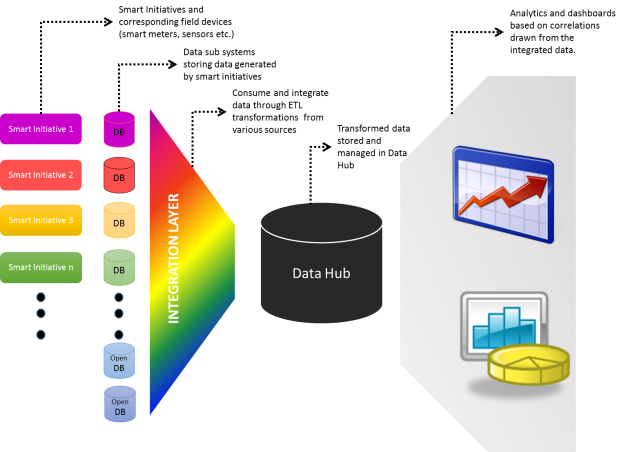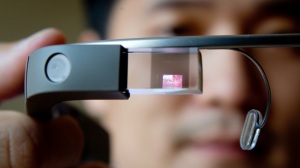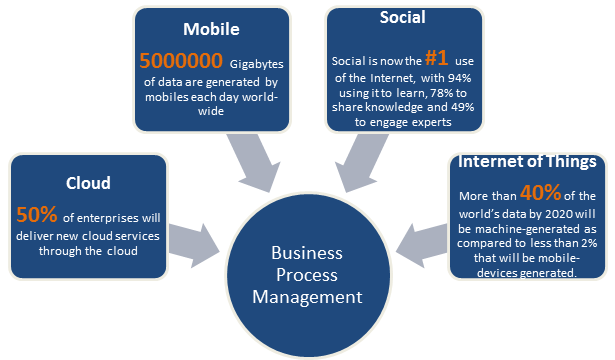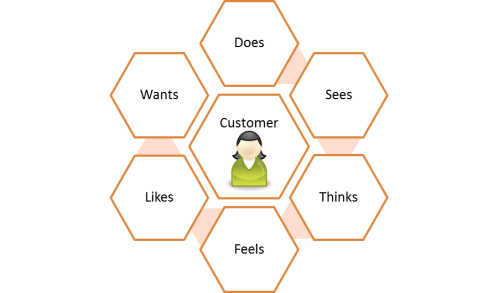Even as the ink was drying on my previous blog about Blockchain in the context of Smart Cities, I had the opportunity of attending a workshop on the evolving IoT landscape and the practical implementation opportunities and challenges associated with it, to deliver an enhanced city experience.
This got me thinking – while there are multiple “new-age technology initiatives” that hold a lot of potential, how does one narrow down to the right technology that must be adopted. We are all aware that cities do not have an unlimited monetary supply for them to be wishful in their approach to exceptional service delivery; on the contrary, most cities today are struggling with funds available at their disposal. This calls for due diligence and deep thinking from a customer perspective – what does a good city service mean for your citizens/residents? A city resident anywhere in the world has minimal expectations that must be delivered against and once this is achieved, the city executives can drive further initiatives to deliver a signature city experience that sets their city apart from the rest. The focus of this blog will be on the former – what does a citizen/resident expect from a Smart city service like public transport, utility payment, land registration, public safety and security, traffic management etc?
The following graphic represents the 3 key attributes of a Smart City Service and the citizen/resident’s expectations against each of them:

From the perspective of the City Administrators, these statements represent the voice of their customer. So, this provides direction for them to shape their service delivery in alignment with citizen expectations. While each city is different in the way its city agencies/departments are structured, the leaders within a city administration needs to put their thinking hats on and figure out what do they need to deliver against these citizen expectations. The following extension to the graphic represents this at a broad level. The city administration should delve deeper and evolve their master plans against them.

To achieve these capabilities, there are multiple measures that could be taken – Operational optimization, Organization restructuring, Performance monitoring, Peer Benchmarking, Citizen Engagement etc. The one initiative that will have the highest impact (in cohesion with the above measures) is adoption of relevant technology. City administrations are not new to technology and most of them have already adopted technology in some form or the other. However, these technologies are predominantly inward-focused (easing operations, publishing reports, regulatory obligations etc.). Today’s world demands city administrators to look at technology through an entirely different lens that has a strong emphasis on customer expectations. This requires some thought on how technologies can be leveraged to deliver a positive city experience to its citizens/residents. It is in this regard that the relevance of new-age tech initiatives comes to the fore. The graphic below extends the story further and details my point of view on the technology initiatives that could be embraced. It needs to be noted that these are not a replacement for existing systems but need to be used as a complement to leverage the true potential.

Reliability is established on one simple premise – having access to the right information at the right time. The mapping of IoT (Internet of Things) as the technology of choice for this service parameter is based on the same principle. For example – Mr.A wants to travel from his home to a Convention Centre to speak at a conference being held there. Considering the importance of him being there on time, he wants to know the best way to get there – drive down vs hire an Uber vs take the public transport. Considering that he has travelled extensively on this route, he is concerned based on his past experiences. Most often than not, he has experienced heavy traffic on this route. Recently, he struggled to find parking for his car and had to eventually park far from the conference center and walk back all the way. During another instance, on his way back from the Conference Centre, there were unexpected rains that lashed and his favorite car bore the brunt.
So, his expectations of a reliable travel from home to the conference center is dependent on him receiving the right information about the real-time traffic situation, parking availability in and around the convention center and weather forecast for the day. This can reliably be achieved through deployment of sensors across the city and then feeding the data generated by these sensors into an IoT platform operated by the city administration. Further, the IoT platform can draw correlations and run prediction algorithms (needs analytical capability) that will eventually provide contextual information to Mr.A to plan his travel.
City administrations also need to establish a level of transparency that builds trust and has the citizen appreciate the efforts being put in by their city to make lives easier. Today, every city agency has an IT system(s) that is used to record all the operational activities (meter reading, bill payments, maintenance schedules etc.) that the respective agency is responsible for. In a few cases, such information could be recorded on paper or a rudimentary spreadsheet. However, these records are not available beyond the boundary of the owner city agency and this results in lack of visibility to generate a city-wide operational view – a Common Operating Picture. This is where an initial version of an Open Data Platform needs to established to drive exchange of Government Data between agencies. This needs to be supplemented with reliable recording of cross-domain operational activities on a common ledger that can be trusted and accessed by every party based on their access permissions. This is where Blockchain comes to the fore. Considering the case of Mr.A who travels regularly between his home and the convention center, he wants to know of the work that the city is doing to make his travel easier. So, if city agencies could extend the open data platform to its citizens (sanitized to ensure that sensitive information is not being shared) so that Mr.A can also gather a true and transparent view of the relevant work being done by his city administrators.
Further – Considering that the city is a huge ecosystem, we do not expect that there will be absolutely no failures during operations. What irks most citizens is that it is a huge challenge to identify where the fault lies and they are left running from pillar to post to identify the root cause and plug it. This is when the call for accountability needs to catch the attention of city administrations. Blockchain’s common ledger lends beautifully to this requirement. For example – Mr.A has come across a huge pothole on the roads following 2 weeks of cable laying works. As a responsible citizen, he reports this to the city’s single-window operator. This warrants a deeper investigation and thanks to an existing Blockchain ledger, it is observed that the Contractors responsible for cable laying work have captured the proof of their completed maintenance activities where they mention that the Roads Agency has been informed to complete the road repair as per the contractual clauses in the Smart Contract. This helps narrow down the deviation in service to the right agency and fix this accordingly. There is no longer a problem of each agency having a different view of the truth about what might have happened. Combine this with the transparency that was established through the Open Data platform and the reliability of the data coming from the instrumentation across the city, and your citizen is bound to have a happy city experience.
Remember, the best if yet to come.



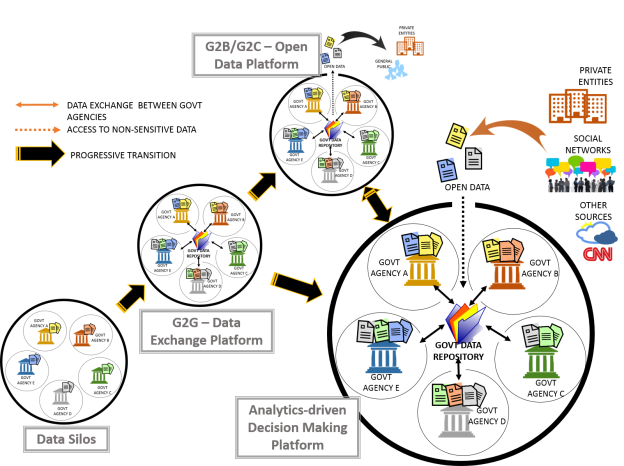

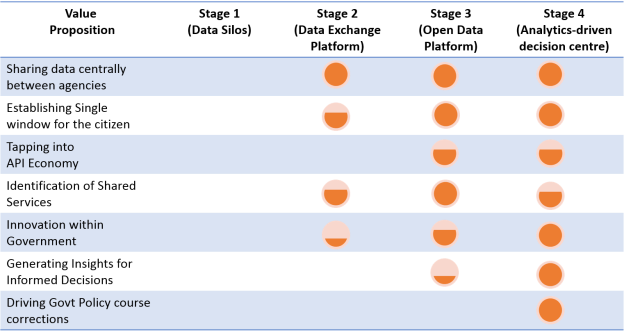



 While these 9 quality parameters are important, one needs to look into the specific business requirement and the corresponding datasets to assign weightage factors to each of these parameters suiting the context. It is also to be noted that each parameter will have further level of detail that has to be studied before declaring it be of high quality. For example, is Credibility defined only by the trustworthiness of sources – what if the data has undergone some transformation in the interim before being made available?
While these 9 quality parameters are important, one needs to look into the specific business requirement and the corresponding datasets to assign weightage factors to each of these parameters suiting the context. It is also to be noted that each parameter will have further level of detail that has to be studied before declaring it be of high quality. For example, is Credibility defined only by the trustworthiness of sources – what if the data has undergone some transformation in the interim before being made available? Most government agencies will have a mix of these different segments of rated data with a heavy leaning towards one-star and two-star data. While one-star and two-star data is fairly easy to generate, this limits data usage on the consumers’ side, when exposed and made available as Open Data. Generally, there are very few consumers willing to invest and/or competent enough to refine the provider data further to make it more consumable. And hence, the uptake of this kind of data will be low. Provider agencies will need to invest in progressing further on the maturity roadmap – make data non-proprietary, add semantics and link to related data/content. More importantly, they should adopt these new methods for all data generated till date and in the future. As a data provider agency progresses on this maturity roadmap, it will start seeing a corresponding adoption and value-generation from the larger city ecosystem. It is to be noted that the progression towards 5-star data will involve a change in organization practices and culture but once that becomes business-as-usual, the effort required is fairly low compared to the uptake one gets to see on the consumer-end.
Most government agencies will have a mix of these different segments of rated data with a heavy leaning towards one-star and two-star data. While one-star and two-star data is fairly easy to generate, this limits data usage on the consumers’ side, when exposed and made available as Open Data. Generally, there are very few consumers willing to invest and/or competent enough to refine the provider data further to make it more consumable. And hence, the uptake of this kind of data will be low. Provider agencies will need to invest in progressing further on the maturity roadmap – make data non-proprietary, add semantics and link to related data/content. More importantly, they should adopt these new methods for all data generated till date and in the future. As a data provider agency progresses on this maturity roadmap, it will start seeing a corresponding adoption and value-generation from the larger city ecosystem. It is to be noted that the progression towards 5-star data will involve a change in organization practices and culture but once that becomes business-as-usual, the effort required is fairly low compared to the uptake one gets to see on the consumer-end.
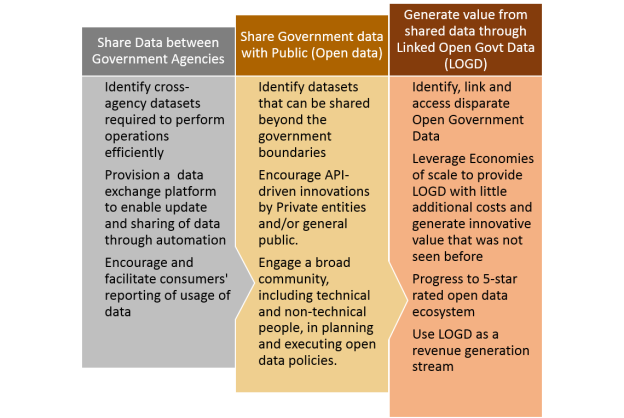 The next level of progression will be to linked open government data (LOGD) and use this as a revenue stream. LOGD can demonstrate value in a wide range of use cases that were not thought of earlier. As an example, imagine the impact of accessing real-time public transport services data (from the Transportation department) to an event in the city (organized by Tourism department) that links up with the weather data (gathered from Meteorological department) and helps the citizen plan their journey.
The next level of progression will be to linked open government data (LOGD) and use this as a revenue stream. LOGD can demonstrate value in a wide range of use cases that were not thought of earlier. As an example, imagine the impact of accessing real-time public transport services data (from the Transportation department) to an event in the city (organized by Tourism department) that links up with the weather data (gathered from Meteorological department) and helps the citizen plan their journey.





